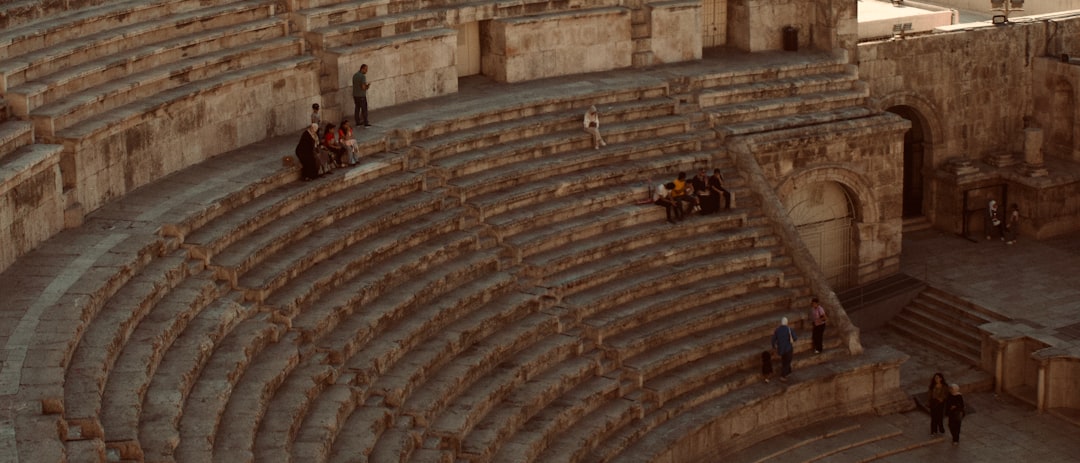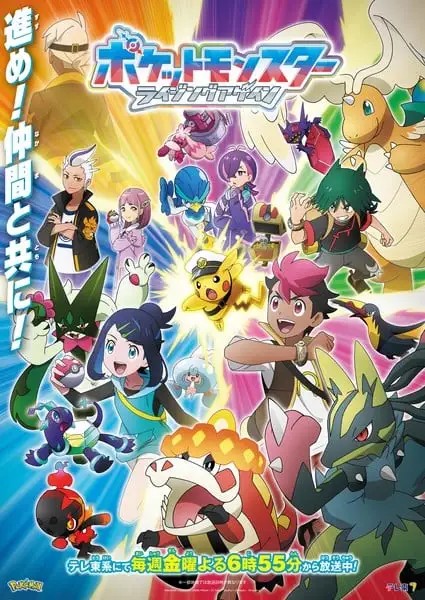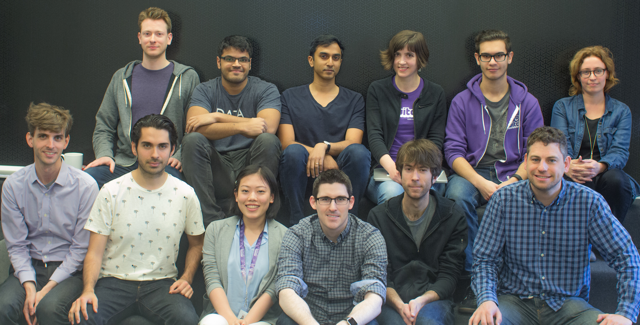The Unrelenting Storm: Deconstructing the Battle Royale Phenomenon
In the ever-shifting landscape of the video game industry, few genres have exploded with the force and cultural impact of the Battle Royale. From a niche mod to a global entertainment titan, this “last-player-standing” format has redefined multiplayer gaming, dominated Twitch News headlines, and generated billions in revenue. It’s a genre built on a simple, primal premise: a large number of competitors are dropped into a shrinking arena with minimal equipment, forced to scavenge, strategize, and fight until only one remains. This high-stakes, unscripted drama creates a uniquely compelling experience that has captivated millions of players across PC Gaming, console, and mobile platforms.
But beneath this simple concept lies a complex web of intricate game design, demanding technical architecture, and powerful psychological hooks. The success of a Battle Royale is not accidental; it is a carefully engineered balancing act of randomness and skill, tension and release. This article will dissect the core pillars of the Battle Royale genre, exploring its technical underpinnings, the design philosophies that make it so addictive, and its ongoing evolution. We will move beyond the surface-level Game Reviews to understand the engine that drives this global gaming obsession, from the server infrastructure required to host 100-player lobbies to the subtle design choices that shape every single match.
Section 1: The Anatomy of a Battle Royale – Core Pillars and Origins
At its heart, the Battle Royale genre is a framework built on four distinct phases that create a repeatable yet unpredictable gameplay loop. Understanding these pillars is essential to grasping the genre’s appeal and the challenges inherent in its development.
The Drop: The First Strategic Decision
Every match begins with a choice. Players are transported over a vast map and must decide when and where to deploy. This initial “drop” phase is a game of risk versus reward. Do you land in a high-tier loot area, like the Tilted Towers of early Fortnite News, knowing you’ll face immediate and intense competition? Or do you opt for a remote, safer location to gear up slowly, risking being under-equipped in the late game? This single decision sets the tone for the entire match, immediately creating dozens of emergent narratives across the map. This phase is critical in shaping the early-game pacing and player distribution, a core challenge in Game Design.
The Scavenge: The RNG Foundation
Once on the ground, players start with nothing. The “scavenge” or “looting” phase begins, a frantic search for weapons, armor, and utility items. This element of Random Number Generation (RNG) is a cornerstone of the genre. It ensures no two games are identical and levels the playing field slightly; a seasoned veteran with a bad loot spawn can be vulnerable to a new player who stumbles upon top-tier gear. This constant search fuels exploration and creates micro-objectives, pushing players to move between points of interest. Balancing this RNG is a major focus for developers, a topic often debated in the Gaming Community and a key factor in Competitive Gaming integrity.
The Shrinking Circle: The Unseen Antagonist
The defining mechanic of the genre is the ever-shrinking safe zone, often called “the circle” or “the storm.” This is the game’s primary pacing mechanism, an invisible antagonist that forces conflict. It prevents players from camping indefinitely and ensures the game progresses towards a climax. The circle’s random shifts add another layer of strategy, forcing players to constantly reposition and plan their routes. This mechanic is a brilliant piece of Game Design, creating tension and driving player interaction without direct developer scripting. It’s a concept that has its roots in early Game Mods and has since been perfected by AAA Games.
The Final Showdown: The Ultimate Climax
As the circle closes to its final, claustrophobic stage, the remaining few players are forced into a final, high-stakes confrontation. The tension is palpable. Every sound, every movement is critical. This is where skill, strategy, and often a bit of luck converge. The victory, the “Winner Winner Chicken Dinner” of PUBG fame or the “Victory Royale” in Fortnite, is a powerful psychological reward, a definitive statement of superiority that keeps players coming back for more. This final battle is the crescendo that the entire match builds towards, a staple of modern FPS Games in the genre.
Section 2: The Technical Gauntlet – Engineering a 100-Player Arena
Creating a smooth, fair, and stable experience for 100 or more players in a single, persistent server instance is one of the most significant challenges in modern Game Development. The technical hurdles are immense and require sophisticated solutions in networking, server architecture, and engine optimization.
Netcode and Server Performance
The biggest challenge is netcode—the code that handles the synchronization of game state across all clients. In a fast-paced shooter, latency and packet loss can ruin the experience. Developers must make crucial trade-offs. For example, the high tick-rate servers seen in tactical shooters covered by Valorant News or Counter-Strike News, which update the game state over 120 times per second, are often not feasible for a 100-player Battle Royale. Instead, games like Call of Duty: Warzone or Apex Legends use lower tick rates and rely on advanced techniques like client-side prediction and lag compensation to create a responsive feel. This is a constant battle, with the latest Gaming Tech pushing for better performance. The server infrastructure must also be robust enough to handle the immense load of tracking every player’s position, actions, and the physics of thousands of in-game objects simultaneously.
Engine Capabilities and Optimization
The choice of game engine is critical. The vast, detailed maps common in Battle Royales push engines to their limits. As often highlighted in Unreal Engine News, engines like UE have become a popular choice due to their ability to handle large, open worlds and high player counts, as seen in Fortnite and PUBG. Developers using engines like Unity, a frequent topic in Unity News, must also employ aggressive optimization techniques. This includes Level of Detail (LOD) systems that reduce the complexity of objects at a distance, culling systems that don’t render objects outside the player’s view, and efficient asset streaming to prevent stuttering. These optimizations are crucial for ensuring the game runs smoothly not just on high-end Gaming PCs with the latest Graphics Cards, but also on Console Gaming hardware like the PlayStation and Xbox, and even on Gaming Laptops.
Anti-Cheat and Security
With high stakes comes a high incentive for cheating. A single cheater can ruin a match for 99 other players. Implementing robust anti-cheat is non-negotiable for a successful Battle Royale. This involves a multi-layered approach: client-side detection systems, server-side analytics to flag suspicious behavior, and a human review process. The ongoing arms race between cheat developers and game studios is a significant operational cost and a constant point of discussion in Esports News and the wider community.
Section 3: Beyond the Gunfight – The Psychology and Design of Survival
The longevity and widespread appeal of the Battle Royale genre stem from more than just its technical execution; they are rooted in a deep understanding of player psychology and clever, layered design.
The Power of Emergent Narratives

Unlike heavily scripted single-player games or objective-based multiplayer modes found in titles like Overwatch, the Battle Royale is a sandbox for emergent narratives. Every match tells a unique story written by the players themselves. The story of narrowly escaping the storm, the story of a daring ambush with a common-tier weapon, the story of an unlikely truce that ends in betrayal—these unscripted moments are intensely personal and memorable. This is what players share with their friends and what makes for compelling content on Game Streaming platforms. This player-driven storytelling is a powerful retention tool.
Balancing Skill, Strategy, and RNG
The “magic formula” of a great Battle Royale is the delicate balance between three key elements:
- Skill: This is the player’s raw mechanical ability—aiming, movement, and reflexes. It’s why a player’s choice of Gaming Mice and Gaming Keyboards can make a difference.
- Strategy: This involves higher-level thinking—map rotation, positioning, predicting enemy movements, and resource management. Listening for footsteps with high-quality Gaming Headsets is a key strategic element.
- RNG: This is the element of chance—the quality of loot found, the location of the next safe zone.
Great Battle Royale games ensure that while RNG can influence the early game, skill and strategy become increasingly dominant as the match progresses. This creates a scenario where anyone feels they *can* win, but consistent victory requires genuine mastery, a core tenet of successful Competitive Gaming.
Genre Blending and Innovation
The Battle Royale framework is incredibly flexible. Its core loop of “scavenge, survive, and be the last one standing” can be applied to almost any genre. We’ve seen this with the fantasy-melee combat of Naraka: Bladepoint and the unique character abilities in the hero-shooter BR, Apex Legends, a constant source of Apex Legends News. The core concept can be divorced from the shooter genre entirely. One could imagine a racing game where the track disintegrates behind the racers, a scenario where precision control from Racing Wheels would be paramount. Or a strategy game where players claim and defend shrinking territories on a map. This adaptability is key to the genre’s future, allowing Indie Games and AAA studios alike to innovate within the established format.
Section 4: The Saturated Market – Recommendations for Players and Developers
The Battle Royale market is undeniably crowded. For every major success, there are dozens of titles that have failed to gain traction. This presents both challenges and opportunities for everyone in the Gaming Industry.

For Players: Finding Your Niche
With so many options, players can find a Battle Royale that perfectly suits their playstyle.
- For the Builder: Fortnite remains king, with its unique building mechanic adding a deep strategic layer.
- For the Tactician: PUBG: Battlegrounds offers a more realistic, military-sim experience where positioning and patience are rewarded.
- For the Movement Enthusiast: Apex Legends provides fast-paced, fluid movement and team-based hero abilities.
- For the Arcade Action Fan: Call of Duty: Warzone delivers the franchise’s signature slick gunplay in a massive arena.
Players should consider what they value most—pacing, realism, team dynamics, or unique mechanics—and try the free-to-play offerings to find the best fit. Staying up-to-date with PlayStation News and Xbox News on new releases is also key.
For Developers: The Path Forward
Entering the Battle Royale market today is a monumental task. Competing directly with established giants is often a losing battle. The key to success lies in differentiation and innovation.
- Find a Niche: Don’t try to be the next Fortnite. Instead, create a Battle Royale experience for an underserved audience. This could be through a unique theme (e.g., naval combat, cyberpunk), a different core mechanic (e.g., magic, melee), or a new platform like VR Gaming.
- Prioritize Polish: A smaller, more polished experience is better than a large, buggy one. A stable game with excellent core mechanics will build a dedicated community, a strategy often seen in successful Indie Games.
- Leverage Community: Build your game with your community. Use early access models, listen to feedback, and be transparent. The Battle Royale audience is savvy and values developers who engage with them. This is a lesson evident in the history of games featured in Steam News and Epic Games News.
Conclusion: The Battle Royale Is Not Just a Genre, It’s a Platform
The Battle Royale has cemented its place in Gaming History, evolving from a simple mod into a foundational pillar of modern multiplayer game design. Its success is a masterclass in psychological engagement, technical achievement, and strategic depth. The core loop of dropping, looting, and surviving in a shrinking arena is a powerful and flexible framework that creates unparalleled levels of tension and player-driven storytelling. While the market for traditional shooters may be saturated, the true legacy of the Battle Royale is its formula—a formula that can be adapted, remixed, and applied to countless other genres.
The future of the last-player-standing concept lies not in imitation, but in innovation. As developers continue to experiment with this framework, blending it with new mechanics and themes, we will see the genre’s influence continue to expand, proving that the storm is far from over. It is a testament to a design so compelling that its core principles will be studied and iterated upon for years to come within the Gaming Industry.













